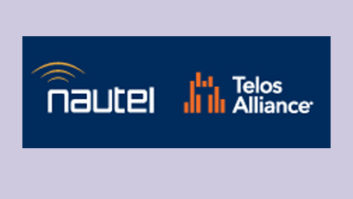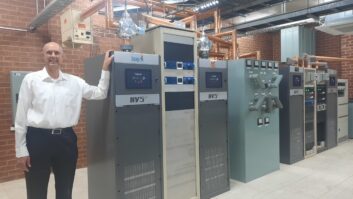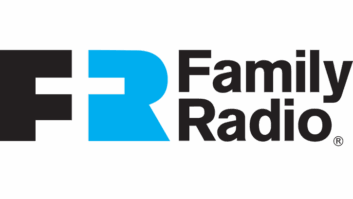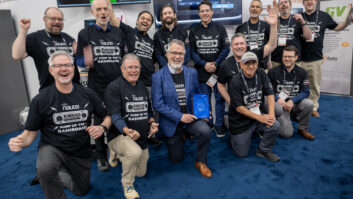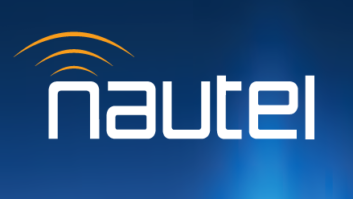At the 2022 NAB Show, Nautel’s Chief Technology Officer Philipp Schmid will present “A Cloud-Capable Synchronized Transport Architecture for FM and HD Radio Broadcasting” on Tuesday April 26.
Radio World: What is the premise?
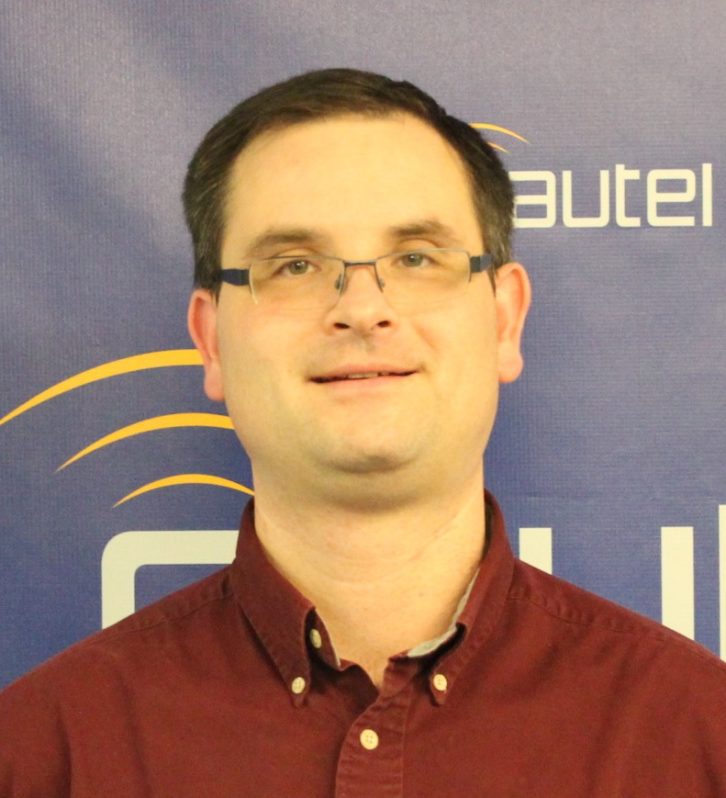
Philipp Schmid: I will be presenting and demonstrating an integrated FM and HD Radio transport architecture that allows for a location- and platform-agnostic air chain architecture bonding all broadcast services into a single transport stream that ends at the transmitter exciter and originates from software-based air chains.
Software-based air chain services, or ACS, can be virtualized or containerized, allowing for a common implementation regardless of the underlying host platform, whether this is a physical on-site server, an on-premises data center or even cloud services like Amazon Web Services.
To maintain consistent timing across the entire air chain, we synchronize all air chain services to the high-quality crystal in the broadcast transmitter all the way back to the air chain ingest in the cloud or other server, without the need for GPS or other synchronization.
Critical to the architecture is a network protocol, based on MPX and E2X industry standards, and a buffer management algorithm that allows for multiple concurrent synchronous backup air chains that always keep the transmitter on-air.
RW: What are the obstacles you’ve needed to overcome to design this?
Schmid: Since the main HD Radio channel is a simulcast of the FM, the FM and HD1 audio must be very closely aligned for a receiver blending between FM and HD to sound good.
While off-air receivers exist that reactively align the FM to HD1 within the broadcast chain, any correction must be done very carefully to minimally impact a new class of HD Radio receivers that themselves attempt to correct the alignment; these may disable your HD broadcast entirely if proper alignment cannot be found.
Industry best practice for the latest fourth-generation HD Radio broadcast architecture is to install all components from FM/HD1 split to FM/HD1 join at the transmitter site, to synchronize everything with GPS and minimize differences in the FM and HD1 audio paths. This is only a partial solution, complexifies the transmitter site and prevents the air chain from moving into the cloud.
All HD Radio generations including the latest have maintained the same feed-forward synchronization architecture from exporter to transmitter, splitting the FM and HD1 audio paths over synchronous and asynchronous air chain portions, leading to potential FM-to-HD1 time misalignment. I will show that a synchronous air chain from split to join is the definitive solution that makes the transmitter crystal the heart of the broadcast system, rather than the exporter.
This keeps everything in lockstep from the transmitter branching out toward the air chain ingest. With a single clock lead, feed back synchronization can now synchronize multiple air chains and keep them all in lockstep for hot standby fail-over.
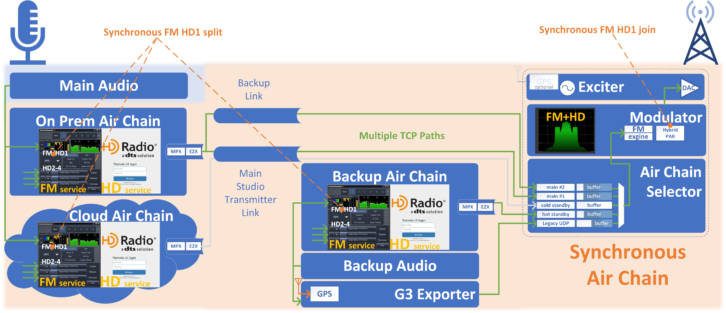
RW: Radio engineers and managers may be afraid of the cloud, having heard stories about security and reliability. What would you want them to know?
Schmid: Through software ACS, we can offer an unprecedented level of studio-transmitter link redundancy and network path redundancy, and now we can also make the entire air chain redundant by cloning it.
We can use multiple TCP/IP paths to harden the STL or any intermediate network path; we also introduce both hot and cold standby air chains that allow us to switch over to another instance of the air chain should any portion of the air chain fail or require maintenance. Switchover can be near hitless, unlike an exciter change over requiring an RF cycle.
We have demonstrated the ability to switch to globally distributed air chains without affecting FM/HD1 alignment; we demonstrated failover between Ohio, Oregon, Brazil and Nautel headquarters.
[For More News on the NAB Show See Our NAB Show News Page]
The internet has never gone down globally, with the last partial global outage affecting only DNS servers in 1997 lasting four hours while still providing direct connectivity; a minimum of five 9s of reliability and internet infrastructure has improved since.
The global internet is a self-healing organism. The last mile, namely the STL, has been and will continue to be the weak link. A local backup air chain can serve as a last line of defense even for emergency broadcasting and alerting.
Security is a valid concern and it is a reality for all radio stations unless they are willing to air gap the entire operation regardless of cloud connectivity.
We are proposing to reverse the TCP/IP server/client relationship in today’s HD Radio network architecture.
The TCP server ought to be upstream in the cloud or data center to follow the typical internet paradigm and make use of common security practices. By reaching out to an air chain server, the transmitter can easily traverse a firewall, without compromising the firewall by opening any port redirects or dropping other security guards.
Using Network Address Translation (NAT) and IP Masquerading, the IP address of the transmitter is never revealed outside the firewall, eliminating a potential attack vector. No longer does the downstream transmitter have to trust that the incoming connection is valid; the transmitter reaches out. We can authenticate with the upstream air chain using private/public key authentication to ensure we can trust it, as well. VPNs can also be used to further enhance security.
A software air chain has a tremendous advantage in that should it become compromised by a bad actor, like ransomware, delete the air chain, eliminate the attack vector, restore the air chain to its last good image and go back on-air.
Maybe we are fooling ourselves into thinking that an embedded hardware-based air chain is inherently more secure. Embedded devices come with both proprietary and increasingly open-source software stacks, a leading security concern — think log4j. Embedded devices often do not come with a complete software bill of materials, making a security audit difficult. You may already be compromised and not even know it with the limited system view that embedded devices provide.
RW: What else should we know?
Schmid: Broadcasters tell us that their HD rack, often at the transmitter site, is their most complicated installation and proves to be error-prone. We are acting on our vision to provide a transmitter that takes one or a few simple IP addresses or URIs for all its content needs and push all the intricacies and station personalization into a better-managed software environment, where remote assistance can be provided.
Looking beyond the easier technical HD upgrade, the software approach also provides a more cost-effective way of upgrading to HD Radio by converting your typical cap-ex into an op-ex. Why not give HD Radio a try?
